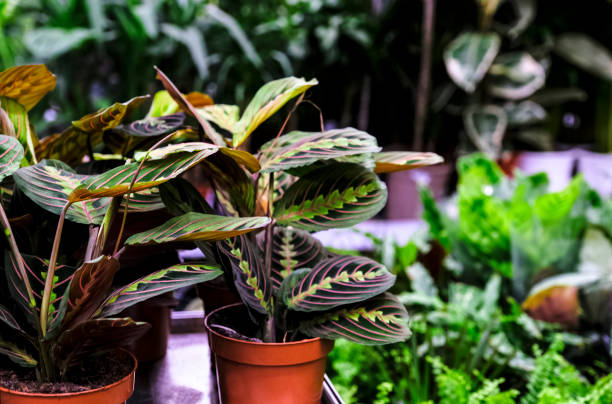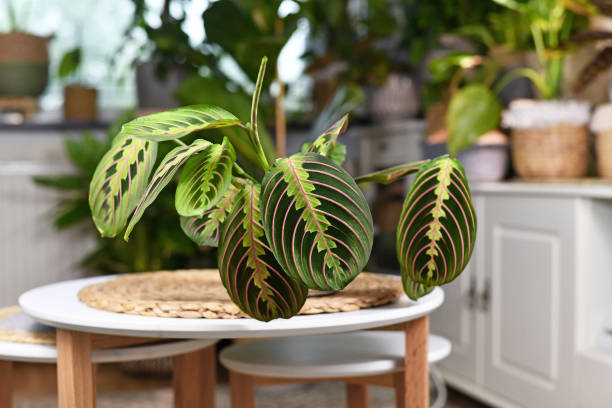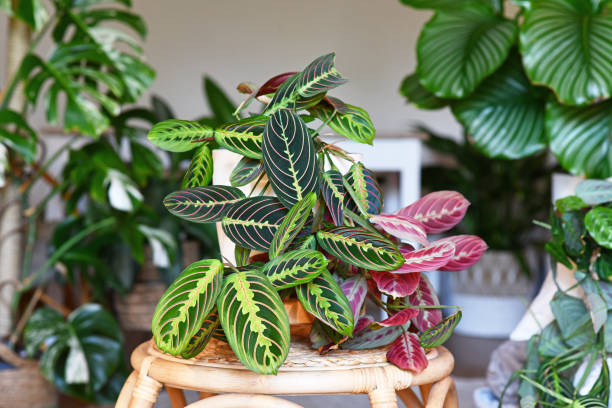With its folding leaves, the Maranta prayer plant is a unique and easy-growing houseplant that should be included in your indoor décor. It is very distinguishable with its beautiful decorative leaves.
These plants have a habit of closing up at night and opening up again at dawn, hence the name prayer plant. Growing these attractive plants is low-maintainance as they don’t require much work.
Growing Maranta prayer plants indoors
Prayer plants are great houseplants that are fairly easy to grow. They add a splash of colour and style to any room, so it’s no surprise that they are a growing favourite amongst houseplant owners. Because they are slow growers, you don’t need to worry about them growing out of bounds. Provide them with the necessary growing conditions and see them flourish. Prayer plants are native to tropical rainforests, which gives you plenty of clues on how to cater to its needs.
The plants are low-growing, spreading plants that thrive best in tropical greenhouse-like conditions, including warm, humid airflow, well-draining, nutrient-rich soil, and regular fertilization. This means that since they grow on the rainforest floor in the dappled light, they will take lower light levels indoors than many other tropical plants.
Bright to medium indirect sunlight will allow your prayer plant to thrive. Avoid prolonged exposure to direct sunlight as it can burn your plant’s delicate leaves.

Image Credit: Unsplash
Marantas prayer plants require well-draining, loamy soil to thrive indoors. Typically, traditional potting mix works well if you keep the soil of your prayer plant evenly moist. This means that you should water them once the top layer of soil has dried out, mostly likely once or twice a week, especially during the summer months. Take note of your watering schedule, as they are very susceptible to drought and will not survive for long if left unwatered. Your plants can also suffer from root rot and fungal problems if they are overwatered.
Because their native rainforests are very humid, your plants naturally favour high humidity indoors. To increase humidity indoors, you can place a small humidifier nearby, or place the pot on top of a drip tray filled with small stones and water so the pot is not standing in water. As the water evaporates, it creates the humidity needed by the plant.
Common problems with prayer plants
Since these plants are generally considered easy to grow, they prefer greenhouse-like conditions and frequent watering, so this can be a challenge to get them accustomed to your home at first. As a result, it’s common to run into a few problems:
- Yellow leaves
- Red spider mites
- Brown leaves
- Dropping leaves
- Brown spots on your leaves

Image Credit: Unsplash
ALSO SEE:
Feature Image: Unsplash


